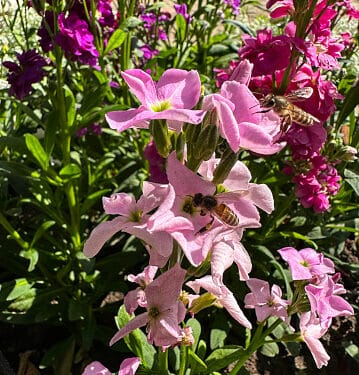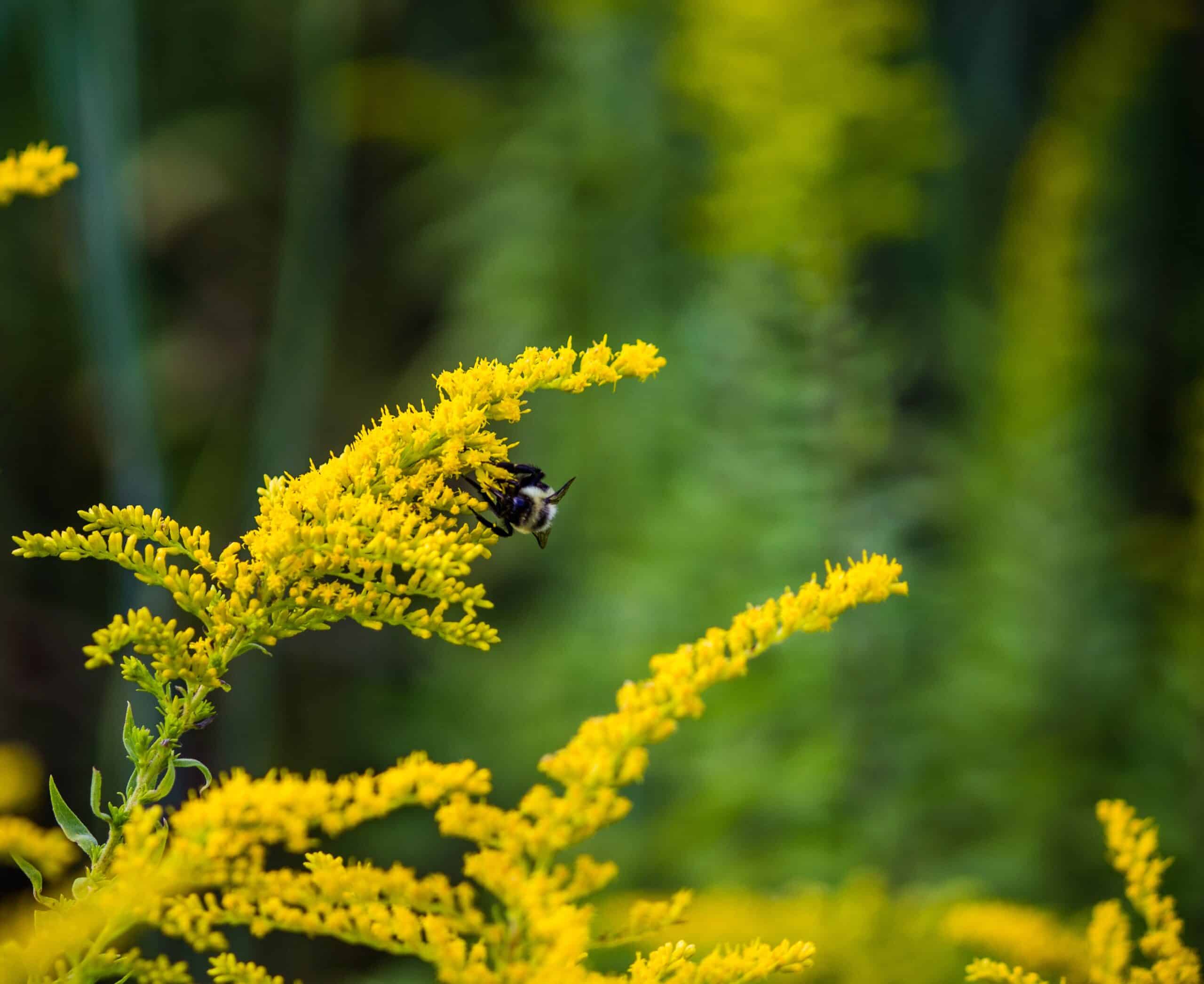Night-Scented Stock, scientifically known asmatthiola longipetala, is an annual of the Brassicaceae family.Its common name comes from its remarkable perfume which is emitted when the flowers open at night. Though similar in structure to the common sweet pea, Night-Scented Stock is a smallerflower and is paler in color than its relatives, ranging from white to pale lavender.
This lovely flower can be grown in a range of settings, including gardens, containers, and planters. It does best in warmer climates, where it blooms from late spring to early fall. Those botanically inclined will find Night-Scented Stock easy to cultivate, making it a great plant for those just starting out.
How to Plant Night-Scented Stock
Night-Scented Stock is a relatively easy plant to care for. It prefers well-draining, nutrient-rich soils in either full-sun or part-sun environments. It should be watered thoroughly when planted and then as needed throughout its growth cycle. If grown in containers, it is important to use proper drainage materials, including gravel and vermiculite, for the potting soil.
When it comes to temperature requirements, this plant does best between 55 and 60 degrees Fahrenheit (13-15 degrees Celsius). Any colder and it may go dormant or even die off completely. Humidity levels should be moderate to high.
The use of a liquid fertilizer once a month is often recommended,as it will provide the essential nutrients this flower needs to stay healthy. Be sure to use a fertilizer that is diluted to a 10-20-10 blend.
Meaning and Symbolism
Dating back centuries, Night-Scented Stock has been a symbol of beautiful downfall. Ancient Greek literature speaks of its ability to rise in the face of adversity, while others associate its beauty with secular separations, such as marriages and end-of-year university admissions.
Today, its symbolism might have shifted slightly, but it is still considered a symbol of sincerity, gratitude, and humility. Additionally, its delicate fragrance is said to help boost the mood and bring happiness to those that smell it.Its scientific name, matthiola longipetala, is derived from the Greek words “mata” meaning “stature” and “helios” meaning “ray” or “shine”.
History, Mythology, and Religious Significance
Night-Scented Stock has been mentioned throughout history,in various religions and cultures. One such example comes from the Greek myth of Apollo and Artemis. The two left their mother, Leto, to deliver in Delos, which was granted by the gods in order to protect them from their jealous half-brother, Typhon. Leto was attended in her arduous labor by two Nature Spirits: two Night-Scented Stocks.
In the western tradition, the Night-Scented Stock has strong associations with faith. In Christianity, it has been held up as a symbol of endurance and the Beloved’s willingness to sacrifice for the greater good. In Judaism, it is seen as a sign of introspection and a reminder of the fragility of life. Finally, in the Islamic faith, it is thought to invigorate the senses and open up conversations with God.
Flower Varieties and their Defining Characteristics
Matthiola longipetala has a number of varieties and cultivars available:
- Matthiola longipetala subsp. longipetala – Also known as the Long-Petalled Stock, this variety has flowers that are a pale lilac to white in color, with five to eight petals per flower. It is a generously-scented variety that prefers warm and sunny climates.
- Matthiola longipetala subsp. Maritima – This variety is sometimes called the Sea Stock and has white flowers, with five to eight petals per flower. It prefers cooler temperatures and grows best in coastal areas.
- Matthiola longipetala subsp. Arctica – This variety is sometimes called the Arctic Stock and has white flowers which have six to eight petals per flower. It can be challenging to cultivate as it prefers cooler temperatures and high levels of moisture.
How to Pot and Repot
Night-Scented Stock is best potted in a potting mix specifically designed for flowers. The best mixes have a ratio of 20 percent perlite, 50 percent soil and 30 percent compost. For potted plants, it is important to choose a pot that will provide good drainage and is at least twice as wide as the plant is tall, and six inches deep.
When it comes to repotting, it is important to move the plant to a slightly-larger container; only one to two inches wider is usually enough. Put a small layer of potting mix in the bottom of the new container, and then gently remove the Night-Scented Stock from the old pot and place it in the new. Then, fill the pot with fresh potting soil, pressing gently to ensure it is firmly in place.
How to Prune
Night-Scented Stock is typically not pruned for the purpose of shaping, but rather to remove weak or diseased stems. To do this, use scissors or pruning shears to snip away diseased stems at their bases. Be sure to disinfect the blades between cuts to prevent disease transmission.
It’s recommended to prune the stems of this plant when they’re young and weak, before they’ve grown several inches. If the plant is in danger of being too heavy, some of the older stems may need to be pruned, as well.
How to Propagate
Propagating Night-Scented Stock is best done in the spring using stem cuttings. To do this, cut a four- to six-inch section of stem, just below a node. Then remove the lower leaves, and place the stem cutting in a pot containing damp sand or vermiculite. Water the container, provide some warmth and light and the stem should root within a few weeks.
Common Pests and Diseases
The most common problem with Night-Scented Stock is aphids, which usually feed on young stems and leaves. They can be removed manually or treated with insecticidal soap. Powdery mildew can be an issue as well, and can be controlled with fungicidal sprays and good air circulation.
Three Frequently Asked Questions
1. Can Night-Scented Stock be grown indoors?
Yes, Night-Scented Stock can be grown indoors as a houseplant,though it does need plenty of light to thrive.
2. Is Night-Scented Stock toxic to pets?
No, Night-Scented Stock is not toxic to cats and dogs.
3. How often should I water Night-Scented Stock?
Night-Scented Stock should be watered regularly, making sure that the soil is always moist but not wet.
Table Fact Sheet
| Night-Scented Stock | Matthiola longipetala |
|---|---|
| Family | Brassicaceae |
| Plant type | Annual |
| Mature size | 2-3 feet |
| Sun exposure | Full sun to partial shade |
| Soil type | Well-draining, nutrient-rich soil |
| Soil pH | 6.0-7.5 |
| Bloom time | Late Spring-Early Fall |
| Flower color | White to Pale Lavender |
| Hardiness zones | 5-10 |
| Native area | Mediterranean region |
What we love from Amazon this week
Buy these wonderful flowers directly from Amazon:















